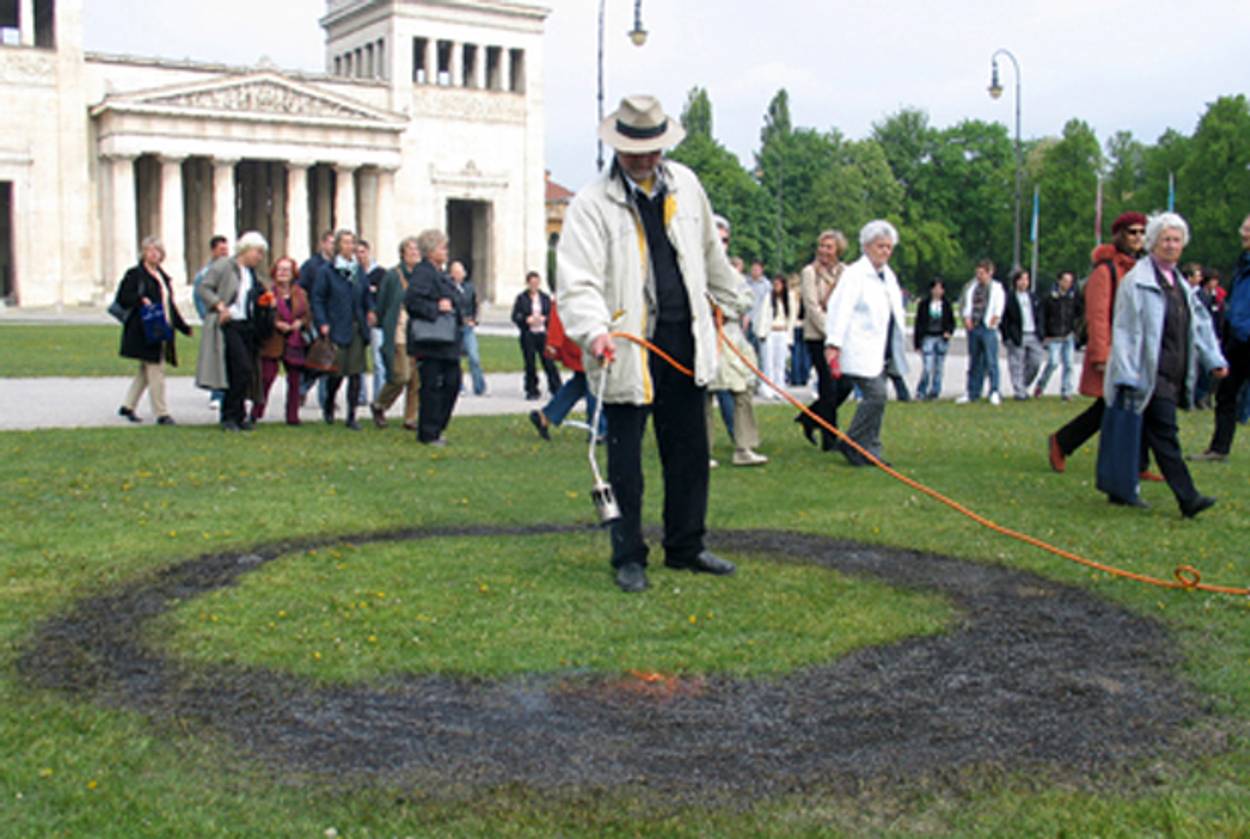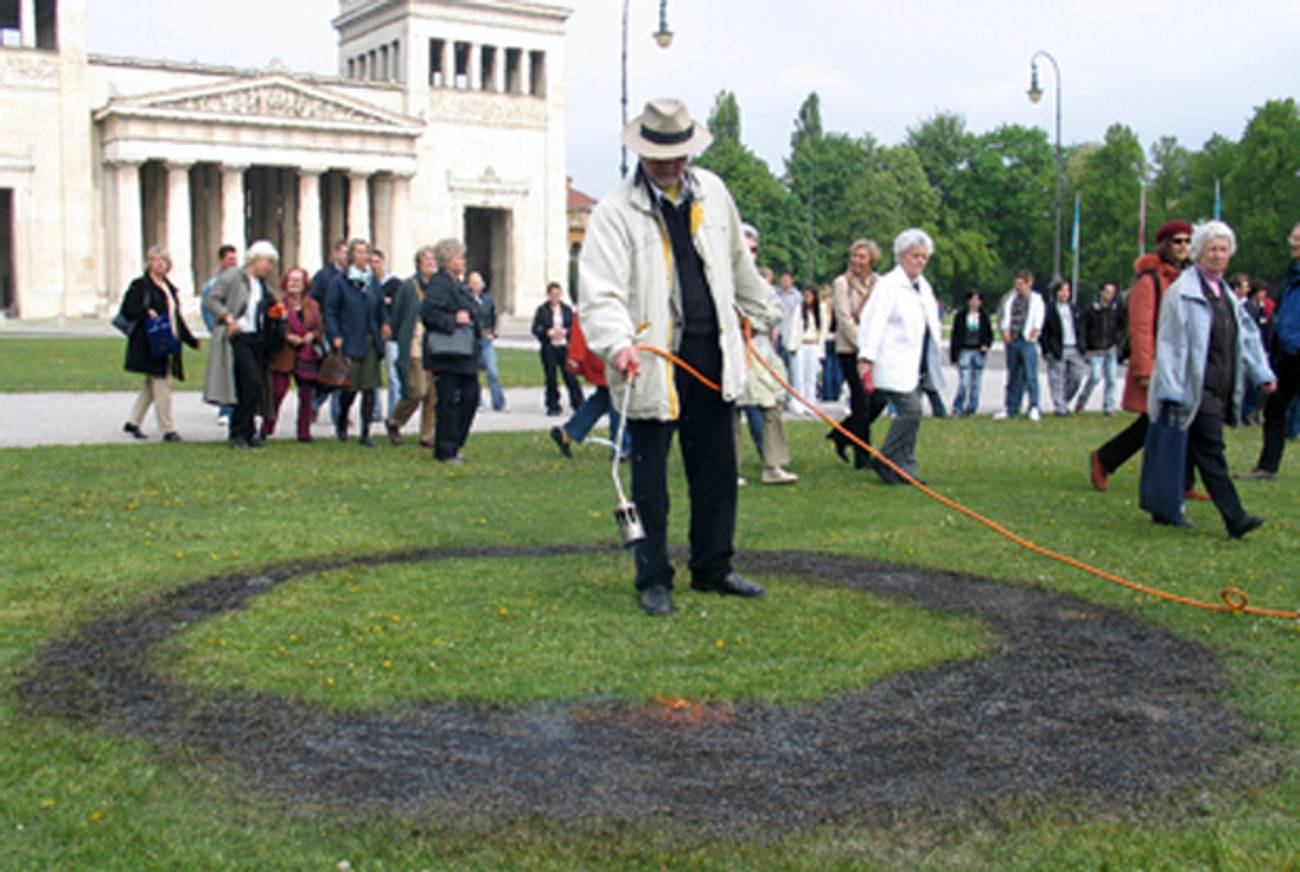German Artist Marks Book Burning With Reading
Wolfram Kastner converts a dark anniversary into a celebration of words




On May 10, 1933, as part of a nation-wide “campaign against the un-German spirit” organized by university students, tens of thousands of Nazis and their sympathizers celebrated a huge “burning ceremony,” incinerating books by outlawed authors in a bonfire in the center of Munich’s Königsplatz, the square where Nazis held mass rallies and established their national headquarters.
This year, on the anniversary of the event and at the very site of the original book-burning, the provocative political artist Wolfram Kastner will burn a black circle into the Königsplatz lawn, as he has done more than a dozen times since 1995, a vivid act of remembrance in the city that Gen. Dwight Eisenhower in 1945 called “the cradle of the Nazi beast.”
“The Holocaust didn’t start in Auschwitz,” says Kastner. “It started right here in the streets of Munich.”
Kastner, whose controversial work is devoted to raising awareness of Munich’s Nazi past, grew up in Germany asking questions about that history. “I got no answers or I heard lies or evasive or apologetic answers,” he told me. “There is so much systematic forgetting. I think it’s necessary to remember without covering history with grass.”
As part of his commemoration, Kastner also organizes a day-long “Reading Against Forgetting” at the Königsplatz, featuring forbidden works from authors who were Jewish, political dissidents, or creators of “decadent” art. These include European authors such as Franz Kafka, Walter Benjamin, Bertolt Brecht, Sigmund Freud, Erich Maria Remarque and Thomas Mann, as well as Americans such as Ernest Hemingway and Upton Sinclair.
The works are read by teachers and students, actors, writers, and politicians, and more people ask to participate each year, says Kastner, who has organized the readings since 2003. He estimated that between 1,500 and 2,000 people attended last year’s commemoration. “When art goes to the street, not staying nicely in a museum, it can be risky,” says Kastner, “but you reach people you might not otherwise.”
The 1933 Munich ceremony began with a torch-lit procession of the entire Munich Students Association, accompanied by parade music. It was followed by singing, a speech by the leader of the German Students Association, and culminated with students throwing the “nation-corrupting” material into the bonfire.
Book-burnings took place in 34 university towns across Germany (mostly on May 10, as planned by the German Student Union, with some following suit in the days and weeks that followed). They were considered successful in promoting “Aryan” culture and received extensive news coverage in newspapers and radio broadcasts.
“Where they burn books, they will also ultimately burn people,” warned the nineteenth century German Jewish poet Heinrich Heine, presciently, in an 1820-1821 play. His works were among those thrown into the 1933 bonfires.
The organization Bücherlesung also organizes readings of banned books called “Books Out of the Fire” throughout Germany on May 10, including a separate two-hour reading in Munich, in the downtown area arranged by Gerhard Schmitt-Thiel, who also supports Kastner’s “Reading Against Forgetting.”
Toby Sonneman is the author of Shared Sorrows: A Gypsy Family Remembers the Holocaust.